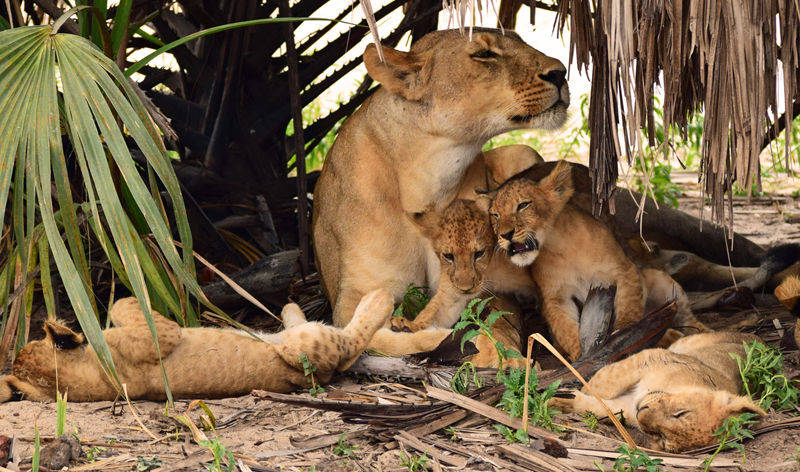The Kisikio lion pride
- Selous Impala guides
- Dec 22, 2016
- 2 min read

Behaviour of the Panthera leo, otherwise known as the African lion, is complex but well studied in science. Young males are known to break away from prides and form coalitions. Coalitions roam the land in search of receptive female prides or wait for their chance to dominate a male occupied pride to take over breeding rights. The turnover of dominant males in lion prides are quite high as can be imagined, as there must be some tough competition to breed with mature lionesses.
This brings us to how the Kisikio pride was formed, and their tales till now.
A few years ago there was a strong pride of nineteen lions that were nicknamed the Manze pride, as they frequented the large area around Lake Manze and still do to this day. One day, six young males were violently evicted from the pride by the dominant male and so broke away from the Manze pride. The young males perhaps too felt the urge to leave and form a coalition to spread out farther into the surroundings. Lion prides can range from two to 30 individuals depending on prey availability, so perhaps prey abundance may have added some motivation.
The young males journeyed to nearby Lake Nzerakera, where they met a pride of fifteen lions. Their confrontation was not a peaceful one. With their adrenaline bubbling from their earlier eviction and the added poise that travelling creates the young lions challenging the Nzerakera pride. Their quarrel paid off as the young males left with three healthy lionesses to form a new sub-pride. The most mature female began to mate with the dominant male in this newly formed pride. This lioness was soon to be nicknamed Kisikio, meaning half-eared in Kiswahili, due to her battle scars. The pride took over the Lake Nzerakera area, and displaced other lion prides.
They were strong, they were together and they were content; except the pair were not successfully breeding after one year…
An unsettling squabble among the pride resulted in Kisikio being replaced by another lioness. However, Kisikio remains an integral part of the pride up to this day, and that is why the pride is named after her. The dominant male maintained his position and began to reproduce successfully with the other female. After the feud one of the males felt he needed to explore new territories in search of receptive females.
After leaving his brothers of the strong and dominant pride, he was successful in finding a pride of only female lions – this pride still roams the areas around the lake, but is only seen on the outskirts.
After the departure of the male lion, around three years ago the Kisikio pride grew by 3 cubs, who are all still alive and thriving today.




This year we are happy to report that the Kisikio Nzerakera pride have now grown by an additional 4 lions, as 4 cubs have been successfully weaned.
We will keep you updated on their success and tales with more to come.
All the best,









Comments